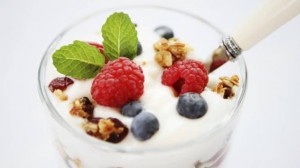Remembering to eat during a busy workday can be hard, whether you’re at home or in the office – unless you stash some snacks away in your desk.
It’s more important than you think. Dietitians say snacks shouldn’t ever replace meals, but they’re often necessary to hold you over until you can step away from the computer: Eating every three to four hours can keep your blood sugar stable, which can prevent severe health problems like heart disease, according to the Centers for Disease Control and Prevention. It can also help you effectively control your hunger over the course of a full day.
“What I see very often are people come home and they haven’t eaten for the day, because they’ve been too busy or haven’t had a chance,” Erica Leon, a registered dietitian and nutrition therapist based in New York, tells CNBC Make It. “When you become ‘over-hungry’ without realizing it, very often you go to the other side, which is overeating.”
The trick, of course, is finding snacks that are both tasty and relatively healthy: A lot of popular snacks are loaded with excess sodium and sugar. That’s typically fine in moderation, but probably not something you want to eat repeatedly on a daily basis.
Here’s what a couple of dietitians and nutrition experts regularly keep at their own desks for everyday snacking:
Fruits with nut butter or cheese
Pairing your favorite fruit with any nut butter or cheese — like apple slices with peanut butter, or berries with cottage cheese — can be a great source of protein to help curb your hunger midday, says Leon. And, a bonus: It’s an easy pairing to achieve with items that are probably already in your home.
If you don’t currently have any fresh fruit, find a local farmer’s market and make the time to stop by, says Kimberly Snodgrass, a food and nutrition expert and academy spokesperson at the Academy of Nutrition and Dietetics.
“Go to your local market and get a big fruit tray, and pick from there what you want,” says Snodgrass. “It’s already pre-chopped, pre-washed and it’s a healthy snack that’s readily available to you.”
Nuts or seeds
Nuts and seeds come with two major benefits: They have a lot of protein, and they can easily fit inside or on top of almost any desk.
Snodgrass particularly recommends unsalted pistachios, because they additionally come with monounsaturated and polyunsaturated fats that are good for your heart. The salted versions, she says, come with way too much sodium — and you can always add your own salt to control how much you’re ingesting.
In terms of seeds, Snodgrass says, chia seeds and flax seeds are the way to go, especially alongside some low-fat Greek yogurt. Both types of seeds contain fiber, which can lower your cholesterol. And protein from Greek-style yogurt makes the snack filling enough to do its job, research shows.
Snack bars
Snack bars are quick and easy treats to grab on your way out of the door, or as you head from the kitchen to your home office. Leon notes that they don’t expire as quickly as other foods, so you can easily store them in your desk for a while.
Options range from granola bars to fig bars, with plenty of others in between — and some are healthier than others. A Consumer Reports guide from last year recommends looking for bars with zero added sugars, and at least three to five grams of fiber and protein. The report also recommends checking the list of ingredients: If the top of the list doesn’t include oats, fruits, nuts or eggs, you should probably stay away.
Hummus and vegetables or bread
Leon says pairing hummus with vegetables or bread-based foods like crackers or pita bread can result in a nice combination of heart-healthy fats, protein, carbohydrates and fiber.
The carbohydrates and protein can help keep your blood sugar stable, says Leon. The CDC notes that the fiber can lower your blood cholesterol, and the potassium in vegetables can help your body regulate the fluids it needs to function.
Put together, Leon says, the combination can satisfy your hunger for a while. As for choosing between the breads and the vegetables, she adds: That’s up to your own personal preference.
Water
Sometimes, your brain or stomach might tell you that you’re hungry — when, in reality, you might just need some water, Snodgrass says. She recommends keeping water at your desk and drinking some before getting up to go grab a snack, to check whether your body is alerting you to hunger or thirst.
“Typically, you’ll see people running to get food when you have to check your cues and say, ‘Wait a minute, did I even have any water today?’ Because a lot of times, when you think you’re hungry, you’re really thirsty and dehydrated,” she says.
If you’re still hungry after drinking some water, get a snack — you probably need one. And if you want to make your water less plain, Snodgrass says, add fruits or vegetables to it: Additions like cucumbers, lemons or mint can provide the extra flavor you desire.
Post time: Jul-15-2022





